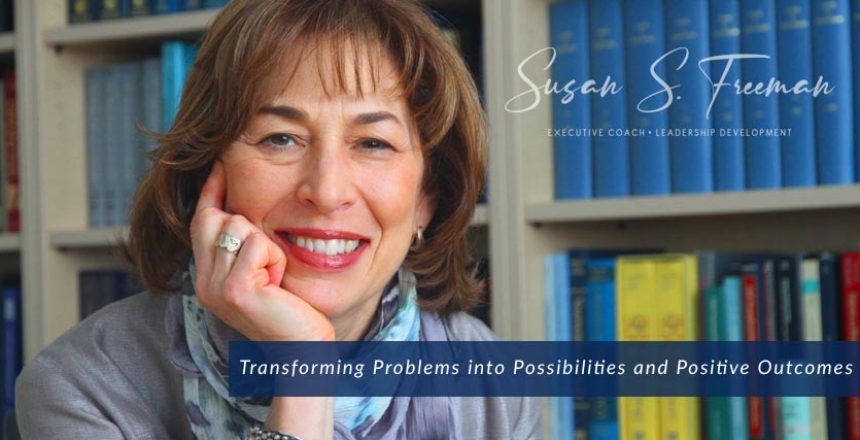 This week’s Step Up Leader Tips borrows from Rebecca Newton’s recent Harvard Business Review column. It grabbed my attention because in coaching leaders I find the fundamental question of “What Kind of Leader Do You Want to Be?” to be the one leaders often haven’t reflected upon. When they do, it has the power to transform not only them, but their organizations.
This week’s Step Up Leader Tips borrows from Rebecca Newton’s recent Harvard Business Review column. It grabbed my attention because in coaching leaders I find the fundamental question of “What Kind of Leader Do You Want to Be?” to be the one leaders often haven’t reflected upon. When they do, it has the power to transform not only them, but their organizations.
“It’s the question missing from so much of leadership development:
“What kind of leader do you want to be?”
We facilitate and encourage self-awareness among up-and-coming leaders (what kind of leader you are), get them to map their journeys so far (what has made you the leader you are), share knowledge and ideas (what kind of leader you should be), and help them acquire new skills and adopt new behaviors (this is how you can become that kind of leader).
But we don’t focus strongly enough on arguably the most central components to successful leadership – leadership intent (the kind of leader you want to be) and impact (the legacy you want to leave). As a shorthand, I refer to these two components, combined, as your “leadership footprint.”
In my experience, many have thought about their leadership footprint at some point, but few have defined it clearly enough to guide their behavior and evaluate their “success.” Of those who have, fewer give it regular consideration – letting it guide their daily decisions – or share it with others, to get feedback and be held accountable.
Here’s an example of how this looks in action. Gail Kelly, CEO of the Westpac Group, one of Australia’s biggest banks and winner of the “Most Sustainable Company” award at the World Economic Forum in Davos this year, has spoken openly and honestly about her personal leadership legacy goals. She’s described these goals as “generosity of spirit.” There are two key elements to generosity of spirit, according to Kelly. The first is believing in the power of people to make a difference (leadership intent). The second is creating an environment that empowers them to flourish to be the best they can be and thereby make that difference (leadership impact).
Kelly does also think about leadership tactics, but these act in service to the greater leadership footprint she’s defined. She defines leaders who have this generosity of spirit as having humility, listening to others, and demonstrating empathy. They are not selfish, intolerant, judgmental, quick to shoot the messenger or find scapegoats, and they don’t sit on the fence to see which way something works out before they decide if they’re going to support it. They deliver feedback honestly and in a timely manner – you don’t wait six or twelve months for your annual performance review. Poor performance is dealt with quickly. And perhaps most importantly, managers choose their assumptions. As Kelly puts it, “I choose to assume that you (my colleague) want the best for me personally and for others. I am generous in my assumptions of your underlying motivations and your intent towards me. Hard as it may be at times, I will assume good intent.”
This approach seems to be working for Westpac – in their internal engagement surveys, 97% of Westpac Group employees report that they can see how their work is linked to the purpose of the company.
I’m certainly not arguing that the one-stop shop for everyone’s leadership success is this idea of generosity of spirit. It works for Gail Kelly because it’s a footprint she has personally chosen and defined. She builds it into her leadership team and ties it directly to results she wants to see in the business.
We shouldn’t all have the same leadership success criteria. We have to define it ourselves. Leaders must give themselves space, time, and permission, and ask for help where they need it, in order to clearly define the culture of leadership they want to build around them. They must assess – both from their own observations and others’ feedback – how they are living up to it, and make the changes necessary to keep building it on a day-to-day basis.
Central to creating a leadership footprint is:
- Defining the kind of leader you want to be.
- Knowing clearly how that aligns with, and helps achieve, your organizational vision and purpose.
- Fostering self-awareness, reflecting on your own behavior and encouraging others to give you feedback.
- Recognizing differences that may arise between your intent and your impact.
- Self-regulating. As Emma Soane of the LSE says, “The strength and the challenge of self-regulation is ensuring that you have coherence between your personality, your behavior, and your leadership goals.”
- Choosing the assumptions about yourself and others that you need to rely on for your leadership footprint to be realistic and sustainable.
My challenge now to every client, whether established or new to their leadership journey, will be the same as the question I need to regularly ask myself: Do you know — and are you mindful on a daily basis of — what leadership footprint you want to make?”
Step Up Leader specializes in helping high-performing leaders explore their leadership footprint. We invite you to join us in the community of leaders who are courageously transforming themselves and their companies. Visit susansfreeman.com/services to learn more.

